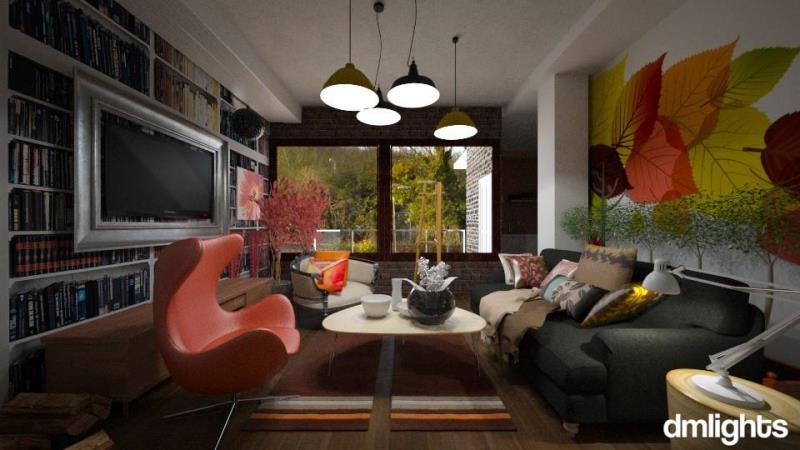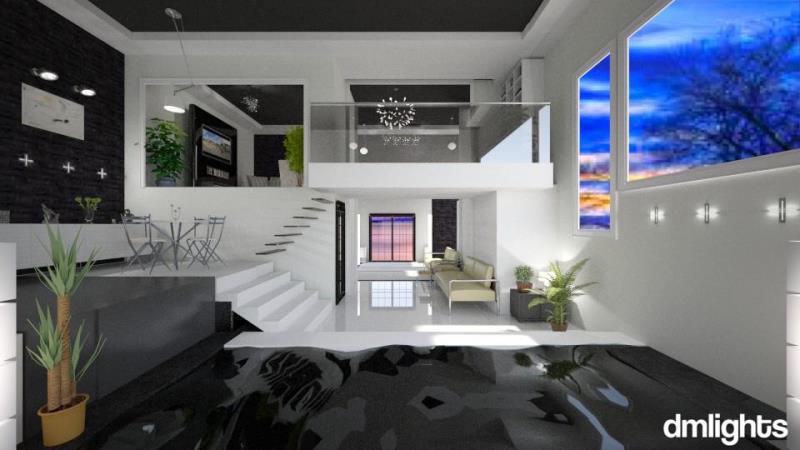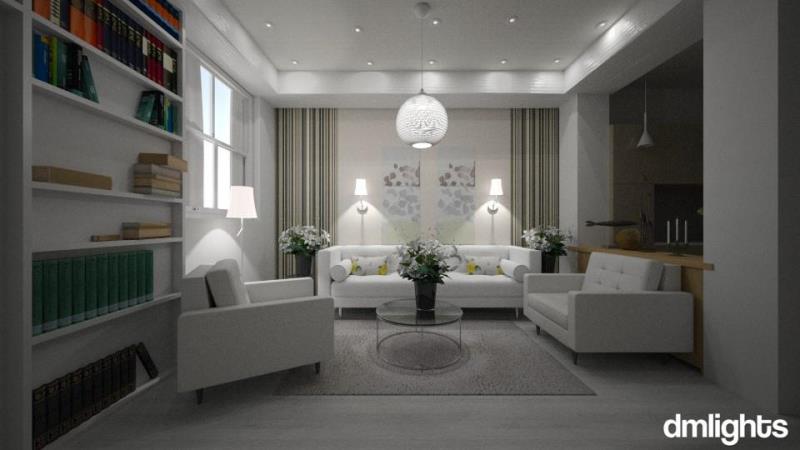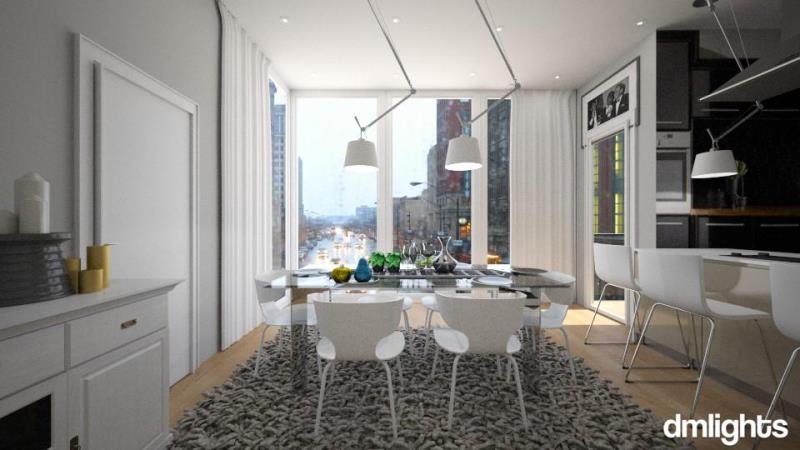How to own a golf villa in Dubai
Posted on Mon, 5 Feb 2018 by Desire to Inspire
Living well starts with good choices, and living in Dubai’s golf communities where fabulous fairways and clubhouse amenities are at your doorstep is the redefinition of luxury living. Setting a new standard for luxury golf course living, Dubai’s golf communities features first-class golf villas that come either furnished or semi-furnished with modern, high-standard finishes and well-designed layouts.

Each villa offers owners the luxury of space, peace and privacy, all under one roof.
The emirate of Dubai is the home to many world-class golf communities that offers upscale villas offering luxury living, opulent amenities, and strategic location. If you are looking to own a golf villa in Dubai, then we advise you to check this article for it provides you with simple guidelines to owning your own golf villa in Dubai.

1- Find the right location
When you look for villas for sale in Dubai, you can find plenty of upscale residential developments that offer luxurious and elegant golf villas such as Emirates Hills, Arabian Ranches, The Lakes, Jumeirah Golf Estates, Victory Heights, Emirates Golf Club Villas, Mohammed Bin Rashid City and Dubai Hills.
The green fairways, luxurious clubhouses, and an enviable lifestyle are some of the finest aspects of living in one of these stunning villas surrounded by golf courses. These developments feature 4 bedroom villas, 5 bedroom villas, 6 bedroom villas and up to 10 bedroom villas to suit all families. Head for one of these projects and book your villa now.
2- Set your budget
Golf villas prices vary according to size, location among other criteria as well that every developer will inform you. To make any sort of real estate investment, sorting out your finances is the first step.
A 3 bedroom villa for instance in Dubai Hills that extends over an area of 3,100 square feet is for sale for 3,563,8888 AED, while a 7 bedroom villas in Emirates Hills is for sale for 69,999,000 AED. Small-scale investors are on a tighter budget than others, hence, it is wise to do a proper market research to know if your budget will fit what’s on the market or not.
3- Get the help of a good property agent
Whether you decided to head straight to the developer or a brokerage company, make sure that you are working with a recognized name in the market. This is a huge investment, so you better make sure you are investing in the right place and with the right people.
Look for agents that have plenty of experience in the UAE real estate market such as Better Homes, Hamptons International among others. When making a purchase that huge, you need to have a reliable partner by your side.
4- Property Inspection
Dubai has many renowned property inspection companies that offer services such as analyzing and reporting on the physical condition of the property and making professional recommendations for repairs, replacements, upgrades, etc. Property investment comes with huge gains and losses, that is why resorting to such establishments will help you identify the real value of the property by carefully checking the property and making sure it adheres to codes and quality. Many online listings fail to show the inside space of a properties or miss to show them all; that is why you need to inspect the property well before sealing the deal.
5- Freehold areas
Foreigner investors living in the UAE and interested to invest in its real estate market are allowed to own properties in Dubai Freehold areas. In May 2002, the crown prince of Dubai, Sheikh Mohammed bin Rashid Al Maktoum, issued a decree allowing foreigners to buy property on freehold ownership. If you aren’t sure about which areas you are allowed to own a golf villa in Dubai, consult with your agent and they will guide you to the areas you are allowed to buy a property in.
6- Get familiar with the legal steps
Whether you want to purchase off-plan, i.e., under-construction property from a developer, or opt for the secondary market or resale from an owner and/or an agent, you need to get familiar with all the legal steps needed to complete the purchase. For off-plan purchases, the buyer will submit an application form to the developer, which outlines the terms and conditions of the agreement and if the property isn’t completed yet, then make sure the sales agreement includes the completion date. As for the secondary sale, the sale contract between the buyer and seller is registered with the DLD, outlining the terms and conditions of the agreement.
7- Title Deed Transfer
For off-plan property direct from the developer, title deeds are usually issued at the developer’s office, whereas the resale of the off-plan property, the seller applies for a NOC from the developer. As for the secondary sale, if the buyer and seller are GCC nationals, The DLD conducts the transfers, others are done by a Real Estate Registration Trustee. All transfers are either held at the office of a Real Estate Registration Trustee or at the developer’s office. Upon obtaining the title deed, the buyer will get the property’s keys and access cards to the new property.
****************
Jamie Moulton is a senior content curator at JustProperty.com, a leading real estate portal in the MENA region, headquartered in Dubai, UAE.
Renovating Your Sydney Home? Here’s What You Need To Know
Posted on Thu, 2 Nov 2017 by Desire to Inspire
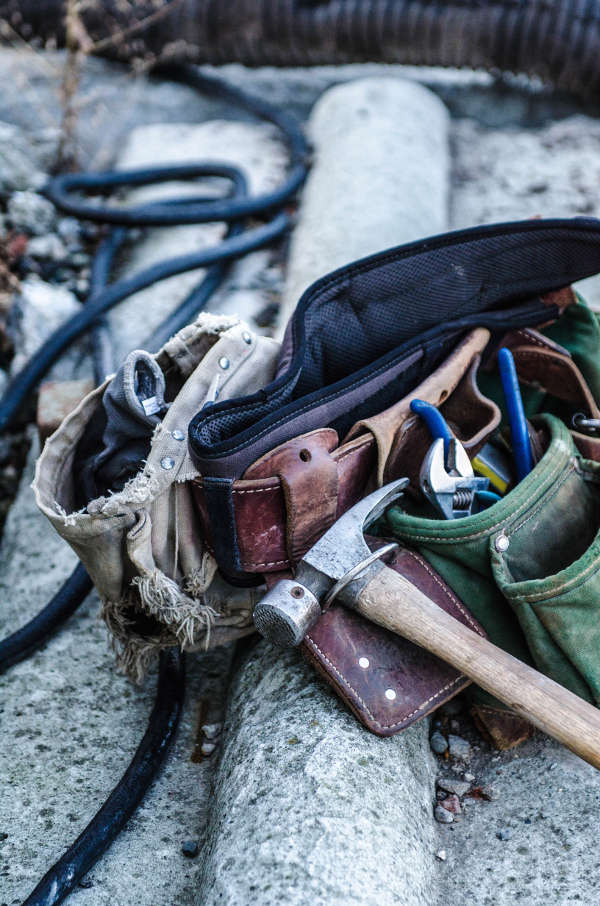
You might find a sudden urge to knock down a few walls at your Sydney house and create a brand new zen garden. Renovation is an art form and if you pull it off correctly you could end up having a lot of fun. Besides, renovating is all about upgrading your property, which means it can help you increase the value of your most prized asset.
So, if you’re considering renovating your home, here’s what you need to know:
Rules and Regulations
In case you didn’t know this already, Sydney is the largest city in the country. Nearly a fifth of all Australians call it home and the city is jam-packed because of it. What keeps it all in order are the rules and regulations around property. You may need to get permission from your local council to approve the renovations you’ve planned. Do some research online and figure out the local building code, legal limitations and the health and safety requirements before you get started. If you own a strata titled property, for example, you may have to figure out what exactly you own. Technicalities on ‘airspace’ and ‘cubic boundaries’ may come into play here. You may also need to get a DA onboard if your planned renovation project involves removing trees or heavy demolition. Don’t get caught up in the renovation red tape.
Plan Perfectly
Consider a renovation project as important as a new build. You wouldn’t start building a house without a blueprint, so why consider tearing down the kitchen without a written plan? Get all your redevelopment paperwork out of the way and hit the drawing board as soon as you can. Figure out how much you want to push yourself, what tasks you’ll be doing on your own and how much you should budget for the project. Create a simple checklist for everything you need to do. Plan as much as you can, but be prepared for the unexpected.
Do It Yourself
If you love handy work and have some time on hand, consider doing some of the simpler tasks yourself. Putting together a new cabinet, demolishing the patio or tearing down a wall is not just easy, it’s incredibly fun. DIY enthusiasts are always available to help you out with quick tips if you ever get stuck. Doing part of the project yourself will also help cut costs. Just know your limits and call in an expert for the seriously complex stuff, like heavy construction, electrical wiring and landscaping.
Aim for Value
Your house is an asset, so renovating it should help it appreciate. Aim for value-oriented projects that offer a return on every dollar you invest. Add space, redesign the kitchen or make the bathroom nicer. Balance your need for personal expression with the need to add value. A bright red wall may look trendy, but it won’t appeal to everyone. All these efforts are sure to get you a better price for your home when it comes time to sell.
Cut Costs
It should be obvious, but cutting costs is a big part of renovating. It’s really easy to go over budget with even the most simple home project. Cut costs wherever you can, but balance it out with a focus on long-term value. If it costs extra for reinforced cabinets or better quality windows, go for it. Build a house that’s meant to last forever. Frequently repairing and replacing stuff is likely to cost a lot more time and money than simply buying the best quality. The way a project shapes up financially depends on how well you’ve planned the budget and how much money you have as contingency.
Be inspired
Walk around the block and gets some ideas from your neighbors. They probably have homes similar to yours, and some of them are bound to be really fancy. If you’re genuinely interested, pick up ideas on blogs and Pinterest. Experiment a bit. Your house is the ultimate form of personal expression, so make it count.
Like any other major city, Sydney has a protocol on how residents can repair or renovate their homes. Get in touch with the experts and do your research before you get started. Stick to the rules, do some of it yourself, cut costs and aim for value. Your house will need some upkeep every few years, but there’s no reason for this process to be stressful or expensive.
~~~~~~~~~~~~~~~~~~~~
This post is a contribution by a guest writer
Redecorating a room? That’s easier than you think
Posted on Tue, 28 Jul 2015 by Desire to Inspire
~~~ This post is brought to you by dmlights ~~~
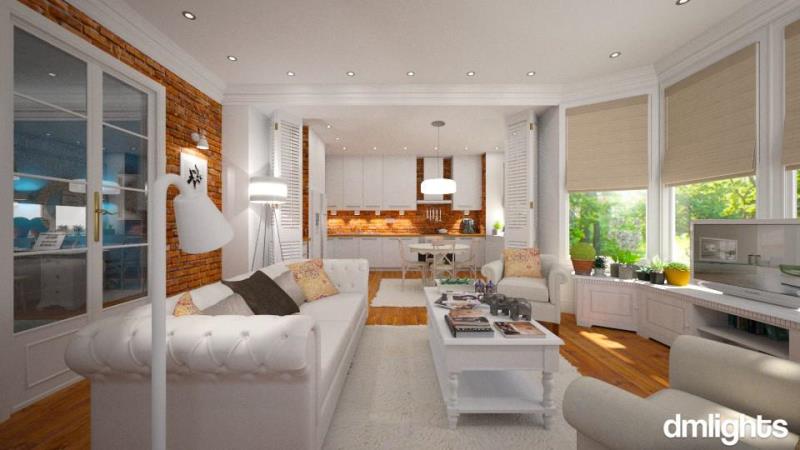
Well begun is half done. When it comes to redecorating a room (or even your entire home), preparation can mean the difference between stress and peace of mind.
It always helps when you have a clear idea of the finished result. Unfortunately, that’s easier said than done. A lot of people are having trouble visualizing new chairs, cabinets, tables, wallpaper, carpet … in an interior.
Here’s the good news: dmlights has found a solution for this problem. The company sells lighting and electrical supplies online, and noticed that a lot of customers were having a hard time judging the size and overall appearance of their products. Simple product photos were too limited. The solution? A virtual interior design tool where customers can recreate their own home (or design their dream home) and test various setups. This 3D Homeplanner proved to be an excellent tool for people who are thinking about redecorating their interior.
Getting started with the 3D Homeplanner
Enough talk … let’s take a look at the 3D Homeplanner. If you want to try this tool yourself, head over to 3D Homeplanner.
1. Draw your space
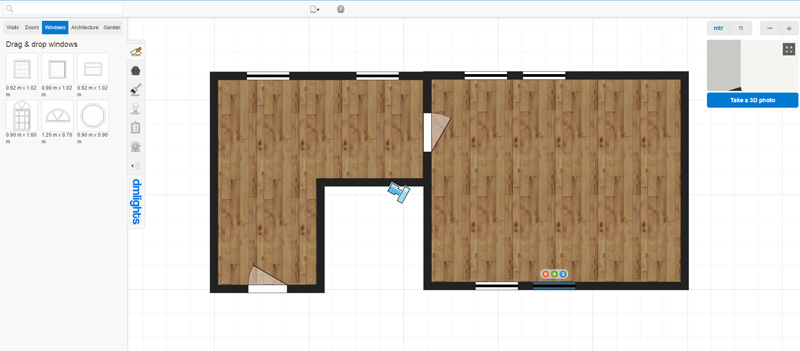
First of all, you need to draw a general layout of your home. There are several premade room shapes, but you can simply draw your own walls as well. The length of each wall is shown, so you can create a realistic representation of each room. Don’t forget to add doors, windows and other architectural elements, such as stairs, fireplaces and balconies.
Most elements can be customized. For example: when you click on a door, you can change the width, height, hinge side, opening direction and colour.
Now it’s time to grab the paint bucket and wallpaper paste. In the ‘decorate’ tab you’ll find several types of paint, wallpaper, tiles, wood, etc. There’s everything you need to decorate your interior.
2. Furnish and switch on the lights
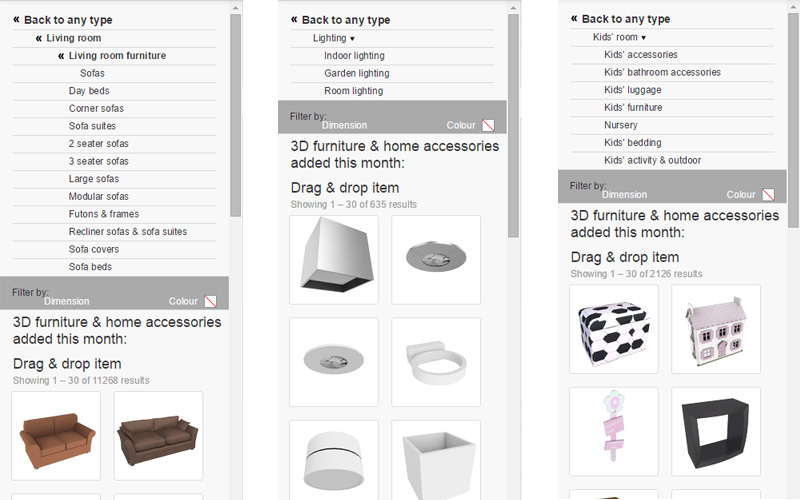
The most fun part of the 3D Homeplanner is probably the ‘furnish’ tab. Take a look at the various types of furniture – from sofas and chairs to lamps and kitchen cabinets – and try out several compositions. Drag, drop and customize … it’s a piece of cake.
The dmlights 3D Homeplanner only uses real furniture models. Furthermore, there’s A LOT of choice, for example:
- 11268 sofas
- 1838 beds
- 635 lamps
- …
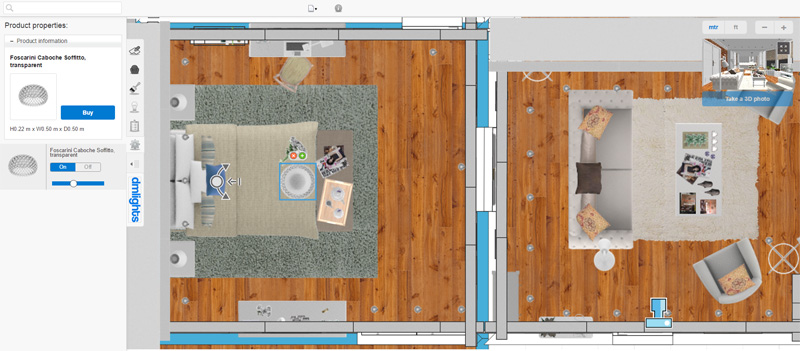
What sets this tool apart from the competition, is the unique dynamic lighting feature. Lights can not only be turned on or off, they can also be dimmed. You have complete control over the light intensity and the atmosphere of the room.
3. Create a HD render
Happy with your virtual interior? Hit the ‘Take a 3D Photo’ button on the right to generate a HD picture of your space with realistic lighting effects. When the render is complete, you’ll receive an email. Don’t forget to share your design with your friends or the rest of our readers. Give the tool a try!
